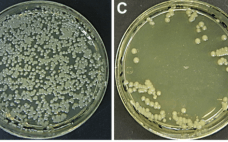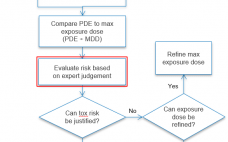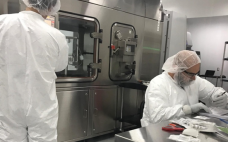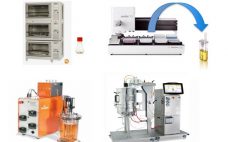This webcast features:Â Dr. Peter Kilbride and Dr. Julie Meneghel, Senior Research Scientist and Cryobiologist, GE Healthcare Life Science In this webinar, we will address fundamentals of cryobiology to (1) understand why a cryopreservation protocol is needed, (2) see what happens biologically to cells while cooling, and (3) allow attendees to design an optimized protocol for their cell type and cryopreservation configuration (e.g., sample size). We will cover the importance of applying controlled-rate cooling and how to best tune it to…
Manufacturing
Introducing New Digital Tools to Enhance Raw Material Verification
This webcast features: Antonia Guerra, Global Digital and Data Science Leader, Field & Safety Instruments, Thermo Fisher Scientific™ This webinar presents the new virtual companion to the Thermo Scientific™ TruScan™ RM Handheld Raman Analyzer, the Virtual TruScan™ RM (VTR) App, which creates efficiencies in material identity verification. This first-of-its-kind digital tool puts the TruScan RM’s decision algorithm in the cloud and allows for method validation and spectral re-processing without the need for a physical sample. With the VTR app, wait…
Best Practices for Aseptic Sampling from Stainless Process Equipment
This webcast features: Bobbi Allen, Technical Expert, Aseptic Sampling, Sartorius Stedim Biotech Aseptic sampling from stainless process equipment is a regulatory requirement and can be accomplished in many ways. How samples are removed from the process stream and the containers you collect them into can have an impact not only on the integrity of the process but the accuracy and repeatability of the tests you are performing. Emerging technologies can streamline sample taking, minimize risk to process, and improve the…
A CDMO’s Perspective on the Development of Bioprocesses for Clinical Manufacturing Success
This webcast features: Nigel Shipston, Director, Program Design, FUJIFILM Diosynth Biotechnologies A strategy for the development and scale of bioprocesses should be assessed at the earliest of stages. There are different challenges depending on the molecule and expression system. This webinar is designed to address some of the areas of consideration for successful development of bioprocesses for biologics and gene therapies. At the end of this webinar, you will be able to do a self-assessment to answer some critical questions:…
Case Study in Conducting Chemical Safety Assessments for Single- and Multi-Use Manufacturing Components
This webcast features: Dr. Sherry Parker, Senior Director, Regulatory Toxicology and Technical Services, WuXi AppTec Extractable and leachable studies of single- and multi-use manufacturing components should be followed up with a chemical safety assessment to understand the chemical risks based on the toxicity of the chemical, the dose and the exposure duration of the drug product, and the patient population for its intended use. This case study will illustrate considerations when conducting a chemical safety assessment, the pitfalls of having…
Discover Capsugel Dry-Powder Inhalation Capsule Portfolio
This webcast features: Claire Tardy, PhD, Research & Development Manager, Capsule Delivery Solutions, Lonza Pharma & Biotech Dry-powder inhalation (DPI) is a major drug delivery technology for the treatment of respiratory diseases and increasingly for systemic drug delivery. Providing a uniform dose in a portable, easy-to-use system, capsule-based DPI is a simple and cost-effective way to deliver medication via the pulmonary route. Within dry-powder inhalation application fields, Lonza offers the Capsugel® Zephyr™ Dry-Powder Inhalation portfolio: high-quality capsule solutions based on…
Aseptic Filling for Gene Therapies and Next-Generation Biologics Within Closed Robotic Workcells
This webcast features: Thomas Page, PhD, Vice President, Engineering and Asset Development, FUJIFILM Diosynth Biotechnologies Fujifilm Diosynth Biotechnologies (FDB) sought to “close the loop” by keeping all upstream and downstream aseptic processing operations within closed systems. The missing part was downstream, where FDB implemented a closed robotic filling workcell for manufacturing gene therapies. Workcells solve long-standing problems with sterility assurance, containment, and process control in aseptic filling. The knowledge developed by FDB during its implementation and early use of a…
Accelerating Development and Manufacturing Platforms for Viral Vectors
This webcast features: Bai-wei Gu, Head of the Cell Line Development Group, WuXi Advanced Therapies Developing innovative advanced therapies is one of our greatest opportunities to dramatically improve patients’ lives. In this webinar, we will discuss our recent technical advancements in efficient viral vector manufacturing process development. From cell line development, to suspension culture of HEK293 cells, to media optimization and purification process, a series of improvements were implemented to advance our platform development for scalable large-scale manufacturing of viral…
Bioprocessing Challenges and CMO Opportunities in China
This webcast features: Scott Wheelwright, PhD, Co-Founder and Principal, Complya Asia China’s biopharmaceutical manufacturing is significantly increasing, among domestic and international companies. Contract manufacturing services as well as those with potential to do so are rapidly changing as well. In Part 4 of our series, Dr. Scott Wheelwright, Co-Founder and Principal, Complya Asia, will provide an overview of factors affecting manufacturing, manufacturing trends by market, biopharmaceutical manufacturing in China among CMOs and developing companies. Watch the recorded webcast below.
Systems Compliance: A Risk-Based Approach to Software Management
This webcast features: Martin Laferriere, Director, IT Systems Compliance, Avid Bioservices Software systems risk management and evaluations should be part of your validation process. It is possible to reduce testing by documenting your risk, actual use, regulation impact, evaluating vendor(s), etc. The approach to managing the risk evolves through audits and prior experience and can tailor the management and approach to system quality within each organizations. In my experience and observations, an efficient system risk management is essential, and it…










